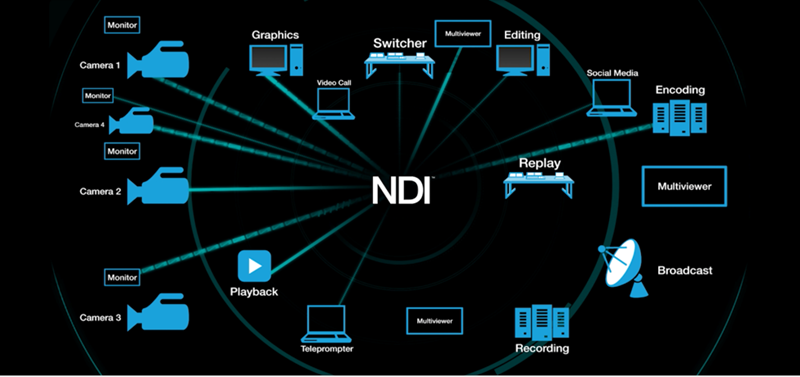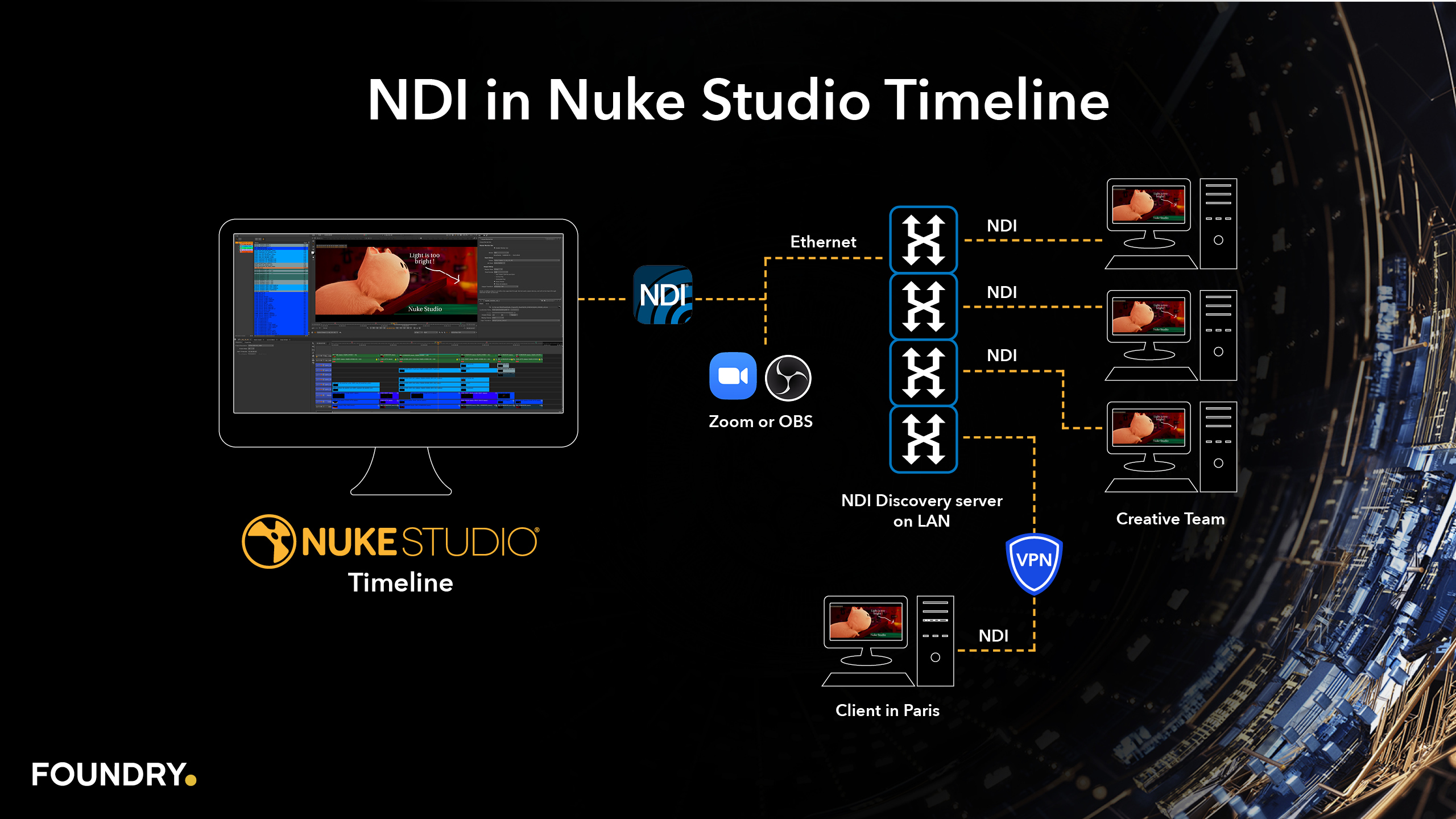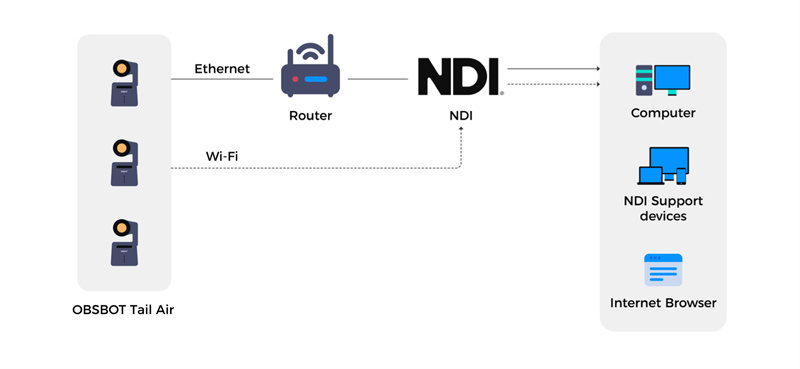What is Ndi Streaming: The Future of Live Video Broadcasts
Ndi Streaming is a powerful technology for video production. It allows seamless transfer of high-quality video over a network.
Ndi, short for Network Device Interface, is changing the way we share video content. This technology lets multiple video sources connect over a local network. No need for cables or expensive hardware. Ndi Streaming offers flexibility and efficiency, making it easier to produce live video.
Whether you’re a professional broadcaster or a hobbyist, Ndi Streaming can elevate your video projects. In this blog, we’ll explore Ndi Streaming in detail. You’ll learn how it works and why it’s a game-changer. Let’s dive in and uncover the potential of Ndi Streaming for your video needs.
Introduction To Ndi Streaming
Ndi Streaming is a method that allows you to transmit high-quality video over a network. It is used in modern broadcasting to share video and audio between devices. Ndi stands for Network Device Interface. It is a protocol developed by NewTek. This technology has revolutionized how video content is shared and produced.
History And Evolution
Ndi Streaming was first introduced by NewTek in 2015. It aimed to simplify the video production process. Before Ndi, transmitting video required expensive equipment and cables. Ndi changed this. It allowed video to be sent over regular computer networks. The technology quickly gained popularity. Over the years, Ndi has improved. It now supports higher resolutions and lower latency. Many broadcasters and content creators use Ndi today.
Significance In Modern Broadcasting
Ndi Streaming has a big impact on modern broadcasting. It makes video production more flexible and cost-effective. Broadcasters can now use existing networks to share video. This reduces the need for additional hardware. Ndi also supports remote production. This means video can be produced from different locations. This is very useful for live events and news broadcasts.
Ndi Streaming also ensures high-quality video transmission. It supports 4K and even 8K resolutions. This means viewers get a better experience. The technology also integrates well with other production tools. This makes it easier for broadcasters to create and manage content.

Credit: avonic.com
How Ndi Streaming Works
Ndi streaming allows video and audio to be shared over a network. It uses high-quality, low-latency technology. Ideal for live broadcasts and real-time communication.
When it comes to understanding Ndi streaming, diving into how it works can be quite fascinating. Ndi, short for Network Device Interface, is a technology that allows video and audio sources to be shared across a network. But how does it work? Let’s break it down. ###Technology Behind Ndi
Ndi uses a combination of efficient compression algorithms and network protocols. This ensures high-quality video streams with minimal latency. Unlike traditional methods, Ndi leverages your existing network infrastructure. This means you don’t need expensive hardware. What makes Ndi different is its use of standard Ethernet networks. This makes it incredibly versatile and affordable. You can easily stream and switch between multiple video sources without noticeable delays. ###Core Components
The core components of Ndi streaming include encoding, transmission, and decoding. Encoding converts video and audio into Ndi-compatible streams. This is done using software or dedicated hardware encoders. Transmission happens over your local network. Ndi uses TCP/IP protocols to ensure data integrity and low latency. This means you can stream high-quality video with minimal lag. Finally, decoding converts the Ndi stream back into video and audio. This is done by Ndi-compatible devices or software. It allows you to view the content on different screens or projectors. Ndi streaming is a game-changer for anyone looking to share video content efficiently. With the right setup, you can create a seamless streaming experience. Have you considered how Ndi could simplify your streaming needs?Advantages Of Ndi Streaming
Ndi Streaming has become a popular choice for many due to its numerous advantages. This technology provides several benefits that enhance the overall streaming experience. Here are some key advantages of Ndi Streaming.
Low Latency
One major advantage of Ndi Streaming is low latency. Low latency means there is minimal delay between the source and the viewer. This is crucial for live events. It ensures that the audience receives the broadcast almost in real-time. Traditional streaming methods often suffer from high latency. Ndi Streaming addresses this issue effectively.
High-quality Video
Ndi Streaming also offers high-quality video. It supports full HD and even 4K resolution. This ensures that viewers enjoy crisp and clear visuals. Quality is a vital aspect of streaming. High-quality video enhances the viewer’s experience significantly. Ndi Streaming leverages advanced compression techniques. This results in superior video quality without requiring excessive bandwidth.

Credit: www.appliedelectronics.com
Ndi Vs Traditional Streaming Methods
Streaming technology has evolved significantly. Ndi (Network Device Interface) is a newer technology. It offers a range of benefits compared to traditional streaming methods. Understanding the differences can help make better streaming choices.
Cost Comparison
Ndi streaming reduces the need for expensive hardware. It uses standard network equipment. Traditional streaming often requires costly dedicated hardware. Ndi can work with existing network infrastructure. This saves money on setup costs. Regular updates and support for Ndi are usually more affordable.
Performance Metrics
Ndi streaming delivers low-latency video. This means almost real-time streaming. Traditional methods can have noticeable delays. Ndi also supports higher quality video. It maintains this quality even with multiple streams. Traditional methods may struggle with multiple high-quality streams. Ndi’s efficient use of bandwidth helps in maintaining performance.
Applications Of Ndi Streaming
Ndi streaming is a powerful tool that has revolutionized the way we think about video transmission. It offers a versatile solution for various industries, from broadcasting to remote production. Let’s dive into the specific applications to better understand how Ndi streaming is changing the game.
Broadcasting
Ndi streaming has become a game-changer in broadcasting. Broadcasters no longer need complex and expensive setups to stream high-quality video. Instead, they can use Ndi to send video over standard networks with minimal latency.
Imagine a local news station that can now cover more events without sending out a full crew. Just a few cameras and Ndi streaming can get the job done. This not only saves money but also speeds up the process of getting news to viewers.
Have you ever watched a live event and marveled at the seamless camera transitions? Ndi streaming makes that possible. It allows multiple cameras to connect to a single network, making it easier to switch between angles in real-time. This creates a more dynamic and engaging viewing experience for you.
Remote Production
Remote production has seen a massive boost thanks to Ndi streaming. You can now produce high-quality content from virtually anywhere in the world. This opens up endless possibilities for creative and business opportunities.
Consider a scenario where a production team is scattered across different countries. Ndi streaming enables them to collaborate in real-time, as if they were in the same room. This means you can bring together the best talent without geographical limitations.
Are you planning a live event but worried about the logistics of getting your team on-site? Ndi streaming can solve that problem. Your team can work from their respective locations, capturing and streaming live footage without any drop in quality. This flexibility makes remote production more accessible and efficient.
In essence, Ndi streaming is not just a technological advancement; it’s a new way of thinking about video production and broadcasting. How will you leverage this technology to enhance your projects?
Setting Up Ndi Streaming
Setting up NDI streaming can seem overwhelming at first, but it’s quite manageable once you break it down. Whether you’re a seasoned content creator or just starting out, understanding the key components and steps can make the process smoother. Let’s dive into the essential hardware and software requirements you’ll need to get your NDI streaming up and running.
Hardware Requirements
First, ensure you have a computer with a strong processor. NDI streaming is resource-intensive, and a powerful CPU will help maintain smooth performance.
Reliable internet connectivity is crucial. You don’t want your stream to lag or drop out. A wired Ethernet connection is often more stable than Wi-Fi.
Consider using a dedicated graphics card. Integrated graphics might not handle the load effectively, especially if you’re streaming high-resolution content.
Software Tools
You’ll need specific software to manage and run NDI streaming. One popular choice is OBS Studio, which is free and widely used. It supports NDI plugins, making it easier to integrate.
Another essential tool is the NDI Tools suite from NewTek. This includes applications like NDI Scan Converter and NDI Studio Monitor, which help manage your streaming sources.
Don’t forget to keep your software updated. New releases often include performance improvements and bug fixes that can enhance your streaming experience.
Setting up NDI streaming involves a bit of preparation, but it’s a rewarding endeavor. What’s the first step you’ll take to get started? Share your thoughts and experiences in the comments below!
Challenges And Solutions
Ndi streaming faces challenges like network latency and bandwidth limitations. Solutions involve optimizing network settings and using efficient codecs.
Navigating the world of Ndi Streaming can be challenging, but understanding these hurdles and their solutions is crucial. Whether you’re a seasoned professional or just starting, you’ll encounter common obstacles. Let’s dive into some of these and how you can tackle them effectively.Bandwidth Issues
Bandwidth can make or break your Ndi Streaming experience. If your connection isn’t strong enough, your stream will lag, buffer, or drop out. This can be frustrating for both you and your audience. To solve this, ensure you have a high-speed internet connection. Consider upgrading your plan if needed. Also, use an Ethernet connection instead of Wi-Fi. This provides a more stable and reliable connection. Monitor your network usage. Close unnecessary applications and devices that might be hogging bandwidth. A streamlined network will help maintain a smooth stream.Compatibility Concerns
Compatibility issues can halt your Ndi Streaming efforts. Different devices and software might not always play nicely together. This can lead to errors and a lot of wasted time troubleshooting. Ensure your hardware and software are up-to-date. Regular updates often fix compatibility issues. Before starting a stream, test your setup. Make sure all components are working harmoniously. Sometimes, you might need specific drivers or software patches. Check the manufacturer’s website for the latest updates. This proactive approach can save you from last-minute headaches. Have you ever faced these issues? What steps did you take to overcome them? Share your experiences in the comments below!Future Trends In Ndi Streaming
As the digital world continues to evolve, so too does the landscape of Ndi streaming. The future of Ndi streaming is filled with promising trends that could reshape how we consume and produce content. Let’s dive into some of the most exciting future trends in Ndi streaming, focusing on technological advancements and industry adoption.
Technological Advancements
Technological advancements are at the heart of future trends in Ndi streaming. One significant development is the improvement in bandwidth efficiency. This means higher quality streams without the need for massive internet speeds. Imagine streaming 4K content seamlessly on a standard home connection. It’s becoming a reality.
Another exciting advancement is the integration of AI and machine learning. These technologies can optimize streaming by predicting viewer preferences and adjusting content delivery in real-time. This results in a more personalized and smoother viewing experience. Picture watching your favorite show without any buffering or lag.
Virtual and augmented reality are also making their way into Ndi streaming. These technologies can create immersive viewing experiences. You could find yourself in the middle of a live concert or a sports event right from your living room. How amazing would that be?
Industry Adoption
The adoption of Ndi streaming by various industries is rapidly increasing. Broadcasters and content creators are recognizing the benefits of Ndi technology. It’s cost-effective and offers flexibility in production workflows. This means more diverse and high-quality content for viewers.
Education is another sector embracing Ndi streaming. Schools and universities are using Ndi for remote learning and virtual classrooms. This technology ensures that students have access to quality education regardless of their location. Have you attended a virtual class yet?
The corporate world is also catching on. Companies are using Ndi streaming for virtual meetings, training sessions, and live events. This not only saves time and travel costs but also ensures that everyone can stay connected. Think about how much more efficient your work life could be.
As Ndi streaming continues to grow, what new trends and advancements do you think will emerge? How will these changes impact your viewing habits and professional life? The future of Ndi streaming is bright, and it’s thrilling to imagine where it will take us next.
Case Studies
Case studies provide valuable insights into the practical applications of NDI streaming. By examining real-world examples, we can learn from successful implementations and understand the lessons learned. This section will highlight some notable case studies.
Successful Implementations
One notable example is a sports broadcasting company. They used NDI streaming to enhance live game coverage. The company integrated NDI with their existing infrastructure. This allowed for seamless camera switching and real-time graphics. Viewers experienced smoother transitions and better quality.
Another successful case is a large university. They used NDI streaming for remote learning. Professors could switch between multiple video sources. This made lectures more dynamic and engaging. Students had a better learning experience. The university reported higher attendance and participation rates.
Lessons Learned
The sports broadcasting company learned the importance of network stability. They had to upgrade their network equipment. This ensured uninterrupted streaming and reduced latency. They also found that proper training for staff was crucial. Well-trained staff could handle technical issues more efficiently.
The university discovered that user feedback was essential. They conducted surveys to understand student needs. Based on feedback, they adjusted their streaming setup. This made the system more user-friendly and effective. They also realized that regular maintenance was key. Regular checks prevented potential problems and ensured smooth operation.

Credit: learn.foundry.com
Frequently Asked Questions
Is Ndi Good For Streaming?
Yes, NDI is excellent for streaming. It offers low latency, high-quality video, and easy integration with various platforms. NDI is cost-effective and ideal for live production environments.
What Does Ndi Mean For Streaming?
NDI stands for Network Device Interface. It enables high-quality video streaming over standard computer networks. This technology allows real-time, low-latency video sharing between devices, enhancing live production workflows.
Is Ndi Better Than Hdmi?
NDI is better for network-based video streaming. HDMI excels in direct, high-quality connections. Choose based on your specific needs.
Is Ndi Free To Use?
Yes, NDI is free to use for individuals. However, businesses may require a license for commercial use.
Conclusion
Ndi streaming is a powerful tool for video content creation. It allows seamless sharing of high-quality video over networks. Users enjoy flexibility and enhanced collaboration. With Ndi, video production becomes more efficient. This technology is easy to use and highly adaptable.
Even non-technical users can benefit from it. So, consider integrating Ndi streaming into your workflow. It might be just what you need to improve your video projects.






